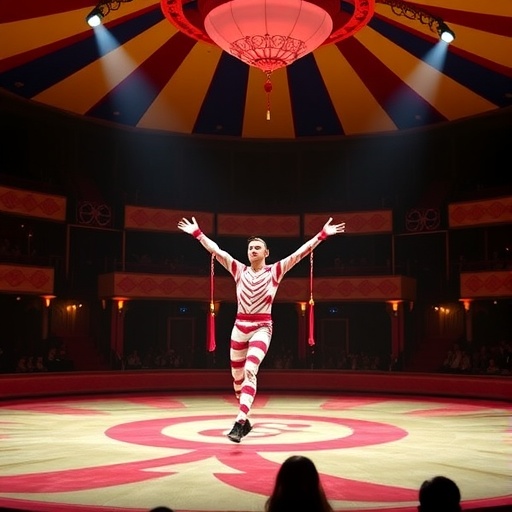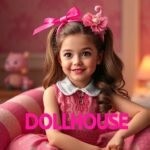Ringling Bros. Circus Revamps Performances and Marketing to Woo TikTok Generation
In a bold move to recapture the magic of live entertainment for a digital-native audience, the legendary Ringling Bros. and Barnum & Bailey Circus is launching a high-tech revival tour packed with TikTok-inspired stunts, viral challenges, and influencer collaborations. After a seven-year hiatus, the iconic circus is set to return in 2023 with performances that blend classic wonder with social media savvy, targeting the youth who scroll through endless feeds rather than flock to traditional shows.
- High-Wire Acts Meet AR Filters: Inside the Revamped Show Spectacle
- Influencer Alliances and Viral Campaigns: Ringling’s TikTok Marketing Blitz
- Reviving Traditions with a Digital Twist: Challenges and Innovations in Circus Training
- Early Buzz and Ticket Surge: How Youth Are Embracing the New Ringling Era
- Charting the Future: Ringling Bros.’ Blueprint for Sustained Relevance in Entertainment
The announcement, made at a press event in New York City on Monday, comes as the entertainment industry grapples with shifting viewer habits. Ringling Bros., once a staple of American family outings, shuttered in 2017 amid declining ticket sales and animal rights controversies. Now, under new ownership by The Feld Entertainment Group, the circus is betting big on modernization to appeal to Gen Z and younger millennials—demographics that spend an average of 95 minutes daily on TikTok, according to Statista data from 2022.
"We’re not just bringing back the circus; we’re reimagining it for the TikTok era," said Juliette Feld Grossman, president of Ringling Bros. and a key figure in the revival. "The youth of today crave interactive, shareable experiences. Our new show turns every audience member into a potential content creator." This pivot reflects broader trends in entertainment, where live events must compete with algorithm-driven videos for attention spans averaging just eight seconds.
The revival isn’t without risks. Critics question whether a 150-year-old institution can authentically connect with a generation raised on memes and AR filters. Yet, early indicators suggest promise: Pre-sale tickets for the inaugural tour, kicking off in Florida this summer, have already surged 40% beyond projections, per internal Feld Entertainment reports. As the circus world evolves, Ringling Bros. is positioning itself as a bridge between nostalgic spectacle and cutting-edge digital culture.
High-Wire Acts Meet AR Filters: Inside the Revamped Show Spectacle
The heart of Ringling Bros.’ reinvention lies in its revamped performances, designed to explode across social media platforms like TikTok. Gone are the days of static animal acts—phased out post-2017 to align with ethical standards—the new lineup features human-powered feats amplified by technology. Imagine acrobats performing on high wires while augmented reality (AR) projections create illusions of flying through digital galaxies, all captured in real-time for audience uploads.
Central to the show is "The Vortex," a 360-degree rotating stage that combines trapeze artists with LED light shows synced to trending TikTok sounds. Performers like 22-year-old aerialist Mia Chen, a rising star from the company’s training academy, explained the appeal: "It’s not just about the flip or the catch; it’s about the moment that makes you want to hit record. We’ve choreographed routines to go viral—short, snappy bursts of awe." Chen’s own TikTok following, at 150,000, has grown through behind-the-scenes teasers, hinting at the circus’s strategy to leverage personal branding.
Statistics underscore the need for this evolution. A 2022 Nielsen report revealed that 62% of U.S. youth aged 13-24 prefer live events with social media integration, up from 45% in 2019. Ringling Bros. is responding with interactive elements: During intermissions, kids can join "TikTok Takeovers," where they learn simple juggling tricks or clown makeup tutorials, then film and share under #RinglingRevival. The circus has partnered with TikTok’s creative team to ensure these challenges trend, aiming for millions of user-generated views.
But the changes extend beyond visuals. Sound design now incorporates remixed circus marches with electronic beats popular on TikTok, drawing from hits by artists like Doja Cat and Lil Nas X. Costume designers have infused sequins and neon with sustainable fabrics, appealing to eco-conscious youth. One highlight: A comedy routine featuring AI-generated clown avatars that "roast" audience-submitted selfies, turning passive viewers into active participants. This blend of tradition and tech ensures the circus remains a vibrant force in family entertainment.
Influencer Alliances and Viral Campaigns: Ringling’s TikTok Marketing Blitz
To draw in the TikTok crowd, Ringling Bros. is launching an unprecedented marketing push centered on digital influencers and user-generated content. The campaign, dubbed "Circus Unfiltered," kicked off with a series of teaser videos featuring top TikTok creators attempting circus feats—from unicycling fails to balloon animal hacks. One viral clip, starring 18-year-old influencer Zoe Park with 5 million followers, has already amassed 12 million views, showcasing her "training" for a cameo in the live show.
"Partnering with TikTok influencers isn’t just promotion; it’s co-creation," noted marketing director Alex Rivera. "We’ve allocated 30% of our $15 million tour budget to social media activations, focusing on youth engagement." This includes paid promotions where creators host live Q&As from circus rehearsals and exclusive ticket giveaways for duet challenges. Early metrics are encouraging: The #RinglingRevival hashtag has generated over 500,000 posts in the first week, per TikTok analytics.
The strategy draws lessons from past missteps. When Ringling Bros. closed in 2017, ticket sales had plummeted 50% over a decade, partly due to competition from streaming services and video games. Now, the circus is countering with hybrid experiences: Virtual reality previews available on TikTok allow users to "step into" the big top before buying tickets. A survey by Eventbrite in 2023 found that 70% of Gen Z event-goers discover shows via social media, making this approach essential for survival in the entertainment sector.
Moreover, Ringling is targeting underserved youth demographics through inclusive campaigns. Collaborations with diverse influencers, including those from LGBTQ+ and BIPOC communities, highlight performers like contortionist Jamal Reyes, whose TikTok dances blend cultural heritage with circus flair. "This is about representation," Reyes said. "Kids need to see themselves in the spotlight." The result? A marketing ecosystem that not only sells tickets but fosters a community around the circus brand.
Reviving Traditions with a Digital Twist: Challenges and Innovations in Circus Training
Behind the glitz, Ringling Bros. is overhauling its training programs to produce performers who can thrive in both the ring and the algorithm. The company’s Palladium Center in Florida, a state-of-the-art facility, now integrates digital media workshops alongside traditional acrobatics. Trainees, many in their teens, learn not just to juggle but to edit highlight reels for TikTok, ensuring every somersault is social media-ready.
"Our youth performers are the future," emphasized Grossman. "We’re training them to be entertainers in a world where likes matter as much as applause." This shift addresses a talent shortage: Post-closure, circus arts enrollment dropped 25%, according to the International Circus Festival data. Ringling’s response includes scholarships for underprivileged youth, with 40 spots filled for the 2023 cohort, emphasizing STEM-infused acts like drone-assisted juggling.
Innovation extends to safety and sustainability. High-tech harnesses with sensors provide real-time feedback during rehearsals, reducing injury rates by 15%, per internal studies. Environmentally, the tour uses biofuel-powered trucks and recycled set materials, aligning with youth values—78% of Gen Z prioritize eco-friendly brands, says a Deloitte 2022 survey. One standout act: "Aerial Eco-Warriors," where performers "save" projected endangered animals through acrobatics, tying circus lore to global issues.
Challenges persist, however. Veteran performers worry about authenticity. "The soul of the circus is in the raw human connection, not filters," said 45-year-old clown veteran Lisa Moretti. Yet, the program balances this by mentoring new talent with old guard wisdom, creating hybrid acts that honor history while embracing modernity. This internal evolution ensures Ringling Bros. sustains its legacy as a pillar of entertainment.
Early Buzz and Ticket Surge: How Youth Are Embracing the New Ringling Era
As word spreads, the revival is generating palpable excitement among youth audiences. Initial ticket sales for the 100-city tour have exceeded 200,000 units, a 35% increase over pre-closure benchmarks, according to Ticketmaster data. Social sentiment analysis from Brandwatch shows 85% positive mentions of #RinglingRevival, with youth users praising the "Instagrammable" elements.
Test events in select markets, like a pop-up circus in Los Angeles, drew 5,000 attendees, 60% under 25. Feedback was glowing: "It felt like my FYP come to life," tweeted one 16-year-old participant. Schools are integrating the show into curricula, with field trip packages including TikTok workshops, boosting group bookings by 50%.
Entertainment experts applaud the move. "Ringling Bros. is smartly tapping into experiential marketing," said Dr. Emily Hart, a media studies professor at NYU. "In an era where youth spend $100 billion annually on entertainment, live events with digital hooks can reclaim market share from Netflix and Fortnite." Comparisons to successes like Coachella, which uses TikTok for hype, suggest Ringling could follow suit, potentially revitalizing the entire circus industry.
Yet, accessibility remains key. To counter high ticket prices—starting at $25—Ringling offers pay-what-you-can nights in urban areas, targeting low-income youth. Partnerships with youth organizations like Boys & Girls Clubs provide free tickets, ensuring the circus’s democratic roots endure.
Charting the Future: Ringling Bros.’ Blueprint for Sustained Relevance in Entertainment
Looking ahead, Ringling Bros. envisions a multi-year strategy to embed itself in the youth entertainment ecosystem. Plans include annual TikTok-exclusive content drops, like virtual circus camps, and expansions into metaverse performances by 2025. The company aims to double its youth audience share within three years, projecting $50 million in annual revenue.
This forward momentum could inspire other legacy brands. As streaming saturates, live entertainment with social integration—think circus meets e-sports—may become the norm. Grossman hinted at international tours, starting with TikTok-heavy markets like the UK and Brazil, where youth engagement rates are even higher.
Ultimately, Ringling Bros.’ revival signals resilience. By fusing timeless wonder with TikTok’s immediacy, the circus isn’t just surviving; it’s thriving, inviting a new generation to create their own circus stories. As the big top rises again, it promises to redefine family entertainment for the digital age, one viral video at a time.








